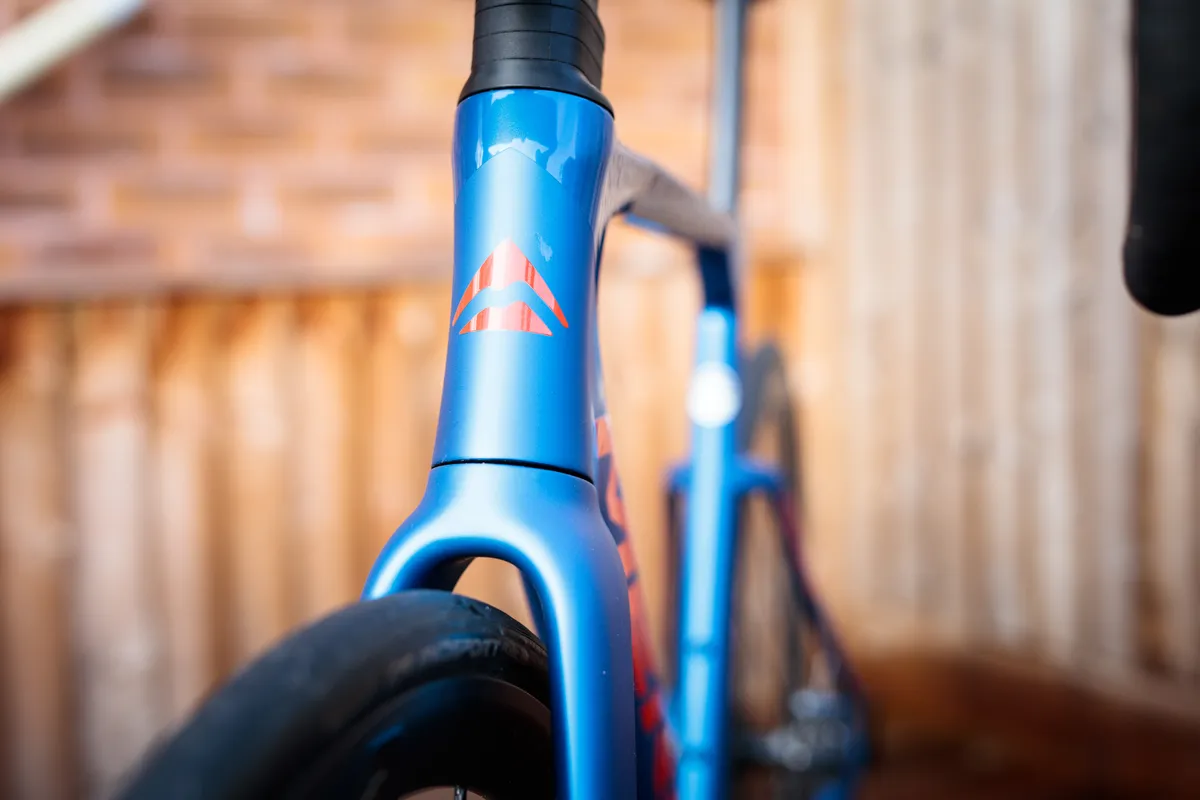The fourth generation of the Merida Reacto is approaching its fifth anniversary and, right on cue, a new version of the aero bike is being used by the Bahrain-Victorious team at the Tour de France.
This is one of the new bikes we thought we might see at the 2025 Tour de France and Merida has delivered with a revamped aero bike that has a new fork and plenty of changes across the frame.
The existing Reacto, launched in July 2020, is one of our favourite aero bikes of recent times. In fact, BikeRadar’s aero ace, Simon von Bromley, awarded the mid-range Merida Reacto 6000 a 4.5-star score in his review.
He praised its “excellent frameset and attractive price”, and the Reacto has consistently been one of the best-value bikes in the pro peloton.
Here’s what we know so far about the new Merida Reacto.
1. It has a deeper head tube

Anyone who’s been paying attention to aero design trends will have noticed that head tubes are getting deeper – and that’s the case here, too.
This trend has, in part, been driven by a 2023 change to the UCI’s rules, which increased the maximum permitted depth-to-width ratio of tubes from 3:1 to 8:1, affording bike designers much more aero freedom as a result.
Whereas the existing Reacto’s head tube has a fairly rectangular shape, the new design extends notably deeper, with a more slab-like appearance.
Still, it’s not as wild as the new Ridley Noah Fast.
2. The fork is new

Looking at Lenny Martinez’s bike (above), the fork has clearly been an area of attention for Merida.
It’s a more sculpted affair, both in terms of a clear ridge on either side of the fork crown, which then extends into the head tube, and the shape of the fork legs as they travel towards the axle.
The previous Reacto’s fork had a smooth, rounded shape at the leading edge (before becoming angular at the axle), whereas this new fork looks shaped to better cut through the wind.

3. The top tube is tapered (and there’s no compensation triangle)

Continuing from the head tube and fork, the top tube now sports a more tapered design, slimming and flattening in profile as it meets the seat tube. The existing top tube has a more consistent shape from head tube to seat tube.
Merida has also ditched the ‘compensation triangle’ that filled the space at the top/seat tube junction.
While there’s no official information from Merida on this bike just yet, the updated top tube design is likely to improve comfort and shed a little weight.
The seatpost clamp also appears to have moved from in front of the post to behind it.
4. The seat tube has been updated

The changes continue at the seat tube. The top part of the new seat tube looks to be a touch deeper, and there’s also a more pronounced gap between the lower section and the rear tyre.
Looking at the previous bike, the rear tyre typically sits closer to the seat tube within a more distinct seat tube cutaway.
Merida has almost certainly increased the tyre clearance on the new Reacto and this change will help.
The existing Reacto has clearance for a 30mm tyre, but the latest aero race bikes commonly have at least 32mm, in the case of the Colnago Y1Rs, or 34mm (see: Ridley Noah Fast) and we’d expect that to be the case here.
5. There’s a beefy bottom bracket

Finishing our tour of the new Merida Reacto, the bottom bracket is certainly beefier.
Fred Wright gave us a good look at the new Reacto when he was unfortunately stood at the roadside following a crash on stage two.
The bottom bracket area is much taller. The result, in terms of any claims accompanying an official launch, is likely to be improved stiffness, while also giving Merida the opportunity to better shape airflow.




